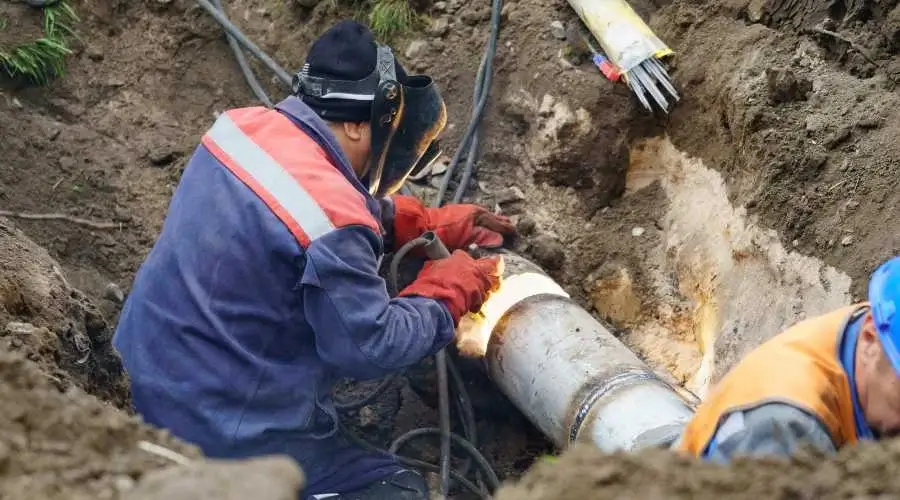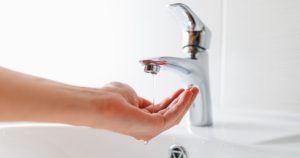Main sewer drains are the backbone of Clifton’s plumbing infrastructure, ensuring efficient waste transportation and treatment to keep homes and businesses running smoothly.
Key Takeaways
- What Are Main Sewer Drains? Underground pipes that transport waste from homes and businesses to treatment facilities.
- Types of Sewer Systems: Combined sewer systems handle both sanitary and stormwater.
- Maintenance Importance: Regular inspections and cleanings prevent costly issues like blockages and damage.
- Repair Solutions: Professional plumbers can diagnose and fix sewer problems using advanced methods like video inspections and trenchless repair.
- Community Impact: Properly maintained sewer systems ensure public health and environmental safety.
Understanding Main Sewer Drains
Clifton’s plumbing system relies on a network of underground pipelines. The main sewer drains are large, durable pipes—commonly made of PVC, cast iron, copper, or bronze—designed to handle high waste volumes from the community. These drains connect smaller lateral lines from homes and businesses to the main system, ensuring waste is efficiently transported to treatment facilities.
Characteristics of Main Sewer Drains
- Diameter: Typically 4-6 inches for lateral lines, while the main sewer lines are much larger.
- Connections: Every sink, toilet, shower, and appliance flows into these pipes, making even minor blockages a significant issue.
- Capacity: Designed to handle increasing waste volumes, but additional lateral lines from new developments can strain the system.
Types of Sewer Systems in Clifton
Clifton uses a combined sewer system, which integrates both sanitary and storm sewers:
- Sanitary Sewers: Transport waste from residential and commercial properties to treatment plants.
- Storm Sewers: Handle runoff from rain and melting snow.
In a combined system, both wastewater and stormwater are treated together. Rainwater dilution reduces the load on treatment facilities, improving efficiency. Treated water is then safely released into the environment, meeting stringent quality standards.
Main Sewer Drains vs. Lateral Lines
Think of the sewer system as a tree:
- Main Sewer Line: The trunk—strong, durable, and responsible for carrying the community’s waste.
- Lateral Lines: The branches—smaller pipes connecting individual properties to the main line.
Key Differences
- Ownership: The city maintains main sewer lines, while property owners are responsible for lateral lines up to the connection point.
- Functionality: Damage to lateral lines can disrupt entire properties, while main line issues affect broader areas.
Common Issues and Maintenance Tips
Potential Problems
- Blockages: Caused by debris, grease, or foreign objects.
- Tree Root Intrusion: Roots can penetrate and damage pipes.
- Aging Materials: Older pipes may corrode or crack over time.
Prevention Strategies
- Regular Cleaning: Removes buildup and prevents obstructions.
- Inspections: Video camera inspections help identify issues before they escalate.
- Proper Usage: Avoid flushing non-degradable items and dispose of grease responsibly.
Sewer Drain Repair Solutions
While the city oversees the main sewer line, property owners must address issues with lateral lines. Here’s how professional plumbers can help:
Advanced Diagnostic Tools
- Video Inspections: Pinpoint blockages or damage within pipes.
- Leak Detection: Identify leaks before they cause significant property damage.
Repair Techniques
- Trenchless Sewer Repair: Minimally invasive and cost-effective.
- Cured-In-Place Pipe (CIPP) Lining: Reinforces damaged pipes from within.
- Sectional Point Repair: Targets specific problem areas without replacing entire lines.
Importance of Wastewater Management
Main sewer drains play a vital role in environmental and public health:
- Waste Treatment: Contaminants are removed at treatment facilities before water is released back into the ecosystem.
- Flood Prevention: Proper maintenance reduces the risk of street flooding during heavy rainfall.
Clifton’s wastewater is treated at the Clifton Regional Wastewater Treatment Plant, ensuring compliance with environmental standards and safeguarding local waterways.
FAQs About Main Sewer Drains
Q: How can I tell if there’s an issue with my sewer line?
A: Look for warning signs such as slow drainage, foul odors, or sewage backups. These often indicate blockages or damage in your lateral lines.
Q: Who is responsible for maintaining sewer lines?
A: Property owners handle lateral lines, while the city manages the main sewer lines.
Q: What is trenchless sewer repair?
A: A minimally invasive method that uses advanced techniques to repair pipes without extensive digging.
Q: How often should I clean my sewer lines?
A: It’s recommended to clean them every 1-2 years or as needed based on usage and previous issues.
Q: Can tree roots damage my pipes?
A: Yes, roots can infiltrate pipes through small cracks, causing significant damage over time.
Consult a Clifton Plumbing Expert
Sewer main drains require regular upkeep to ensure optimal performance. Whether it’s routine cleaning or emergency repairs, BJC Clifton Plumbers provides expert services, including:
- Sectional point repair.
- Cured-in-place lateral pipe lining.
- Comprehensive inspections and maintenance.
Don’t let sewer issues disrupt your life. Contact BJC Clifton Plumbers today to learn more about our trenchless sewer repair solutions and keep your plumbing system in top shape.




